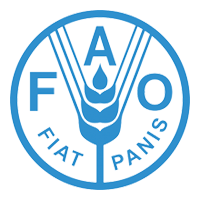Flash flood risk management: a training of trainers manual
Unstable geological conditions and steep topography, combined with frequent extreme weather conditions, make the Hindu Kush-Himalayan (HKH) region prone to many natural hazards. Among these, flash floods -- severe flood events that occur with little warning -- are particularly challenging for communities, threatening lives, livelihoods, and infrastructure. Vulnerable groups such as the poor, women, children, the elderly, and people with disabilities are often the hardest hit. This Training of Trainers Manual is designed to help build the capacity of trainers in flash flood risk management, who can then disseminate the knowledge to a larger number of practitioners. The manual presents an eight-day course including a three-day field trip. Detailed lesson plans for 21 sessions are followed by resource materials that will enable the trainers to replicate the course in their own work areas. Designed for participants with a basic knowledge of flash flood risk assessment and management, the manual focuses on developing understanding of the types, causes, and impacts of flash floods; flash flood hazards, vulnerability, risk assessment, and management methods; the role of local knowledge and gender perspectives in flash flood risk management; participatory social hazard mapping techniques; concepts and methods for an integrated approach to flash flood risk management; the full range of risk management measures for specific types of flash floods; legal and institutional aspects; and modelling tools. It is hoped that the publication will contribute meaningfully towards reducing disaster risk and providing greater physical security for the people of this vulnerable region.
Related Resources
Prospects of Agricultural Development in Africa: Implications for Agricultural Education and Training
The status of both food security and human development in Africa is affected by the performance of agriculture. Agriculture does not only determine the availability of food which is the key element for attaining food security; it is also the...

Asia-Pacific Fishery Commission (APFIC). Responsible management of fisheries and aquaculture in the Asia-Pacific
This is the final report of the fifth regional consultative forum meeting of the Asia-Pacific Fishery Commission (APFIC) convened in Hyderabad, India from 19 to 21 June 2014. It was attended by 85 participants from 17 countries and 28 national,...

Enhancement of capacity of farmer organizations for sustainable irrigation systems in Anuradhapura and Kurunegala districts
Over the past decades public investment in major, medium and minor irrigation systems has not yielded the expected results. The solution to the growing water crisis lies in the institutional reform of existing social systems so as to manage the...
Possibilities for the use of innovation in Vidzeme planning region
Innovation in Vidzeme Planning Region is realised in the frame of National innovation system, the elements of which correspond to innovation and innovation system theories, and the best practices of which are applied in the most innovative countries of the...

Mainstreaming disaster risk reduction into agriculture: a case study from Bicol Region, Philippines
The Philippines is one of the most disaster-prone countries worldwide. Bicol Region is regularly exposed to a variety of natural hazards including tropical storms, typhoons, droughts, drought spells, flash floods, floods, landslides and volcano eruptions, causing frequent destruction, damage and...


